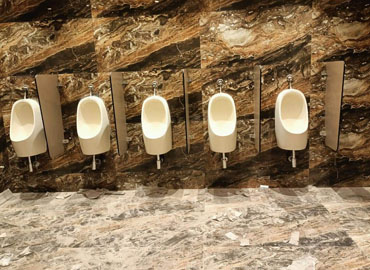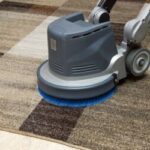Toilet cubicles are a fundamental part of any public restroom, serving a wide range of industries such as offices, schools, shopping malls, and hospitality sectors. While they may seem like a straightforward component, manufacturing toilet cubicles involves a detailed process to ensure they meet both functional and aesthetic needs. Whether you’re designing restrooms for high-traffic areas or specialized spaces, selecting the right cubicles can make a significant difference in terms of hygiene, durability, and user satisfaction.
Material Selection: The Foundation of a Strong Toilet Cubicle
Choosing the right material is crucial for the longevity and resilience of toilet cubicles. Given the high frequency of use in public spaces, the materials must withstand moisture, cleaning chemicals, and wear and tear. Here are some commonly used materials in toilet cubicle manufacturing:
Compact Laminate: Known for its durability and water resistance, compact laminate is an excellent choice for environments with high moisture exposure, such as gym showers or swimming pool facilities. It offers a non-porous surface that prevents the growth of mold or bacteria, making it ideal for hygiene-sensitive locations.
High-Pressure Laminate (HPL): HPL is another popular material due to its aesthetic versatility and resistance to scratches. It’s often used in places where durability and design are equally important. HPL can mimic various textures, from wood to stone, allowing flexibility in design without sacrificing strength.
Glass: For premium restrooms, glass cubicles offer a sleek and modern look. The glass is typically toughened to ensure safety, and the panels can be frosted or colored to provide privacy while maintaining an elegant appearance.
Stainless Steel: In environments where hygiene and sanitation are paramount, stainless steel cubicles provide a highly resistant, easy-to-clean surface. These cubicles are common in healthcare facilities or industrial areas where the materials need to endure frequent sanitation procedures.
Each material comes with its own benefits, and the choice largely depends on the specific requirements of the facility.
Durability and Maintenance
Durability is one of the top priorities for toilet cubicle manufacturers, particularly in high-traffic areas like airports, schools, or sports venues. Cubicles need to maintain their integrity over time, despite constant usage, cleaning, and exposure to moisture. Factors that affect durability include:
Scratch and Impact Resistance: Toilet cubicles should be able to withstand accidental impacts, whether from cleaning equipment or users. Materials like compact laminate and stainless steel score high in this regard.
Water Resistance: Ensuring that materials are water-resistant is vital in preventing long-term damage, such as warping or swelling. For example, compact laminate cubicles are highly water-resistant and suitable for environments like wet rooms and locker rooms.
Maintenance Requirements: Easy-to-clean surfaces reduce long-term maintenance costs. Manufacturers should focus on designs that minimize joints, as these can trap dirt and bacteria, making cleaning more difficult.
Design and Customization Options
Modern restrooms are not just functional spaces; they are also part of a building’s overall aesthetic. Manufacturers need to offer a range of design and customization options to meet the diverse preferences of architects and interior designers.
Color and Finish: The ability to customize colors, finishes, and textures is a key selling point. Cubicles can be designed to blend in seamlessly with the rest of the restroom’s theme or stand out as a design feature.
Accessibility: Compliance with disability access regulations is non-negotiable. Manufacturers should offer cubicle options that accommodate wheelchair access, including wider doors, appropriate height, and handrail installation.
Privacy Features: Full-height doors or partitions can offer enhanced privacy in certain settings, such as executive restrooms. Privacy is becoming a growing trend, and manufacturers who offer these options are likely to see higher demand.
Compliance with Regulations and Safety Standards
Manufacturers must ensure their products comply with local and international safety standards. These regulations cover aspects such as fire safety, disability access, and environmental impact.
Fire Safety: The materials used in toilet cubicle manufacturing must adhere to fire safety regulations, particularly in commercial or public spaces where a high volume of people is present. Materials like compact laminate offer fire-retardant properties, making them a safe choice for many environments.
Sustainability: With growing attention on eco-friendly practices, manufacturers are encouraged to use sustainable materials and eco-conscious manufacturing processes. Low-emission production, recycling, and the use of environmentally friendly materials like recycled glass or FSC-certified timber are crucial for meeting green building standards.
Disability Compliance: Laws like the Americans with Disabilities Act (ADA) in the U.S. or similar guidelines in other countries outline strict regulations on making restrooms accessible to people with disabilities. Cubicle manufacturers need to ensure their products meet these requirements, offering suitable dimensions, door fittings, and support structures for users with mobility challenges.
Hardware and Accessories: The Finishing Touch
The hardware used in toilet cubicles, such as hinges, locks, and handles, must be just as durable and functional as the cubicles themselves. Manufacturers should prioritize the following aspects:
Corrosion Resistance: Given the high moisture environment, hardware should be resistant to corrosion, especially in stainless steel or glass cubicles.
Ease of Use: The hardware must be intuitive and easy to operate, especially for children or individuals with disabilities. Soft-closing doors, easily graspable handles, and secure locks improve the user experience.
Aesthetics: Modern restroom designs often emphasize minimalism, and the hardware should complement this. Sleek, flush-fitting locks and concealed hinges are popular choices for creating a seamless look.
Conclusion: Toilet Cubicle
Toilet cubicle manufacturers goes beyond basic partitioning; it requires attention to detail in materials, design, durability, and compliance with safety and accessibility standards. As manufacturers continue to innovate, the options for creating functional, durable, and visually appealing restroom spaces expand. By selecting high-quality materials and offering flexible design options, manufacturers can meet the evolving needs of businesses and public facilities alike, ensuring comfort, hygiene, and user satisfaction in every restroom experience.



